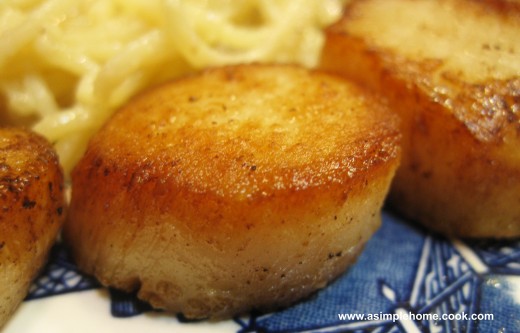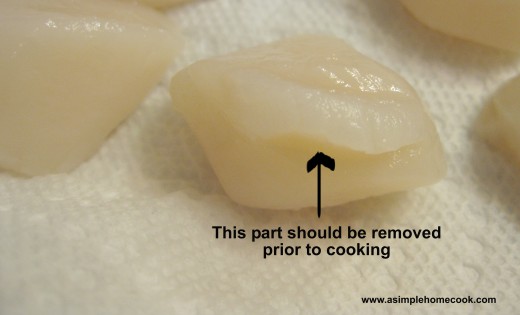When I found a fantastic deal on sea scallops, I used what I had in the pantry to make this very simply prepared dish.
My original intention was to combine the scallops and the pasta, but I didn’t because of my husband’s milk allergy. He ended up eating the pasta anyway though 🙂 Next time, I put the scallops in with the pasta as they went so well together.
I used Alton Brown’s recipe for the scallops. He calls for “dry” scallops. Dry scallops are ones that have not had sodium tri-phosphate added. They are usually off-white, pinkish, or orangish in color. “Wet” scallops have phosphates added and are usually very white. Wet scallops are usually cheaper then dry, but you will be paying for some water weight. Wet scallops are known for not browning easily. If you can’t buy dry scallops, be sure to rinse the wet scallops very well and allow to drain on paper towels for longer than the dry scallops.
Be sure to remove side muscle before cooking. It should easily peel away from the rest of the adductor muscle. If left on, it is very chewy and ruins the scallops.
When you remove the scallops from the skillet, they should still be slightly translucent in the middle when you look at them from the side. The residual heat should continue to cook them. They should still be bouncy to the touch. If they are stiff, they are overcooked. Overcooked scallops can be chewy. Scallops exact cooking time will depend upon their size, but most are done in 1 1/2 to 2 minutes per side.
Put on sauce to cook while cooking the last few minutes of cooking pasta, so the sauce and the pasta will be done at the same time. Cook pasta according to package directions. Many different types of pasta would work: angle hair, linguine, fettuccine, spaghetti, penne.


